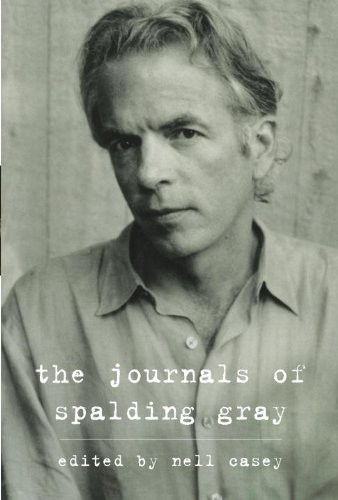
The Journals of Spalding Gray
کتاب های مرتبط
- اطلاعات
- نقد و بررسی
- دیدگاه کاربران
نقد و بررسی

October 3, 2011
These selections from the journals of actor and monologist Spalding Gray span the late 60s through his untimely death in 2004, providing a fascinating glimpse into his psyche, personal life, and how he approached his work. The cast includes Gray's mother (who committed suicide in 1967), the three women he loved (Liz LeCompte, Renée Shafransky, and Kathleen Russo), his psychiatrist Paul Pavel, and later, his two sons. Gray is not easy to likeâa narcissistic alcoholic, abusive to the women in his life, jealous of others' successâbut he manages to charm, and ultimately wins the reader's sympathy. Casey does an excellent job filling in the blanks with biographical information and narrates most of the last few years of Gray's life when, depressed and suffering from brain damage, he was in and out of mental hospitals and rarely wrote in his journal. The few chilling entries that are included from this time show a man obsessed with committing suicide. Fans of Gray's work will savor this window into the mind of a complicated genius.

August 1, 2011
The troubled ruminations of the celebrated actor and writer, entries that darken as they approach his death by suicide in 2004.
An undoubtedly talented performer, Gray (Life Interrupted: The Unfinished Monologue, 2005, etc.) comes across as profoundly insecure and self-absorbed in these erratic passages generously annotated by editor Casey (An Uncertain Inheritance: Writers on Caring for Family, 2007, etc.)—and Gray's journals certainly require annotation. He did not write every day; he used abbreviations; he alluded to things that only he and a handful of others could comprehend. Casey divides the text into decades, each of which she introduces with a long summary of Gray's activities. The entries begin in the 1960s, when Gray (born in 1941) was beginning to launch his career. The suicide of his mother in 1967 darkened the decade—and remained on Gray's mind the rest of his life. At the time it happened, he wrote "I MUST keep the outside me alive!" Given the tortured testimony in these pages, it's remarkable that he did so until 2004. His sexuality remained an issue throughout. Although he did not consider himself gay, he did have same-sex experiences, and he wrote often and graphically about sex, recording his myriad betrayals of his partners. According to his journals, when he wasn't having sex, he was thinking about it, planning it and remembering it. He had alcohol-abuse issues as well, spent years in therapy, underwent electroshock treatments and lived in mental institutions. Yet he somehow found time to write, to perfect his celebrated monologue format and to find men and women—and audiences—who supported him, even during his times of personal implosion. Negative reviews bothered him, and he rarely felt entirely happy about his performances, or about anything else.
A journey into a darkness too deep for hope to brighten.
(COPYRIGHT (2011) KIRKUS REVIEWS/NIELSEN BUSINESS MEDIA, INC. ALL RIGHTS RESERVED.)

May 1, 2011
Gray originated the autobiographical monolog, but these journals are evidently even more revealing, covering his childhood, love affairs, marriage, children, and travels, as well as his experiences as a significant part of the 1970s New York art scene and struggle with depression. Award-winning editor Casey (An Uncertain Inheritance) rifled through 5000 pages of text and further interviewed Gray's associates to offer this document seven years after Gray took his own life. With a 35,000-copy first printing.
Copyright 2011 Library Journal, LLC Used with permission.

September 15, 2011
Gray began performing his mesmerizing, confessional monologues onstage in 1979, then leapt to film in Swimming to Cambodia (1987). His renown intensified with each subsequent movie and book as this tightrope artist of relentless self-awareness, this teller of hard truths and celebrator of beauty, this wily storyteller assiduously transmuted his life into art. His scrupulously edited journals contain the volatile raw material for Gray's artful monologues, revealing just how much he concealed. Gray began keeping journals in 1967 when he was 25 and in shock over his mother's suicide. He explicitly dissects his overlapping relationships with the three primary women in his life and his homosexual side. Obsessed with death and sex, afflicted with depression and breakdowns, buoyed by fatherhood, he calls himself a PUBLIC NEUROTIC and worries about maintaining his creative edge. A car crash in Ireland in 2001 left him with brain damage. In January 2004, he crafted his final act and drowned himself. Gray's journals illuminate the worlds of theater and film and provide tenacious, scintillating, and sorrowful testimony to a uniquely artistic life.(Reprinted with permission of Booklist, copyright 2011, American Library Association.)

























دیدگاه کاربران